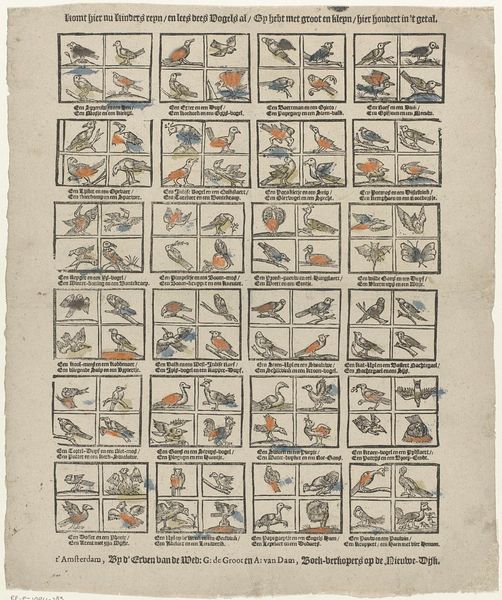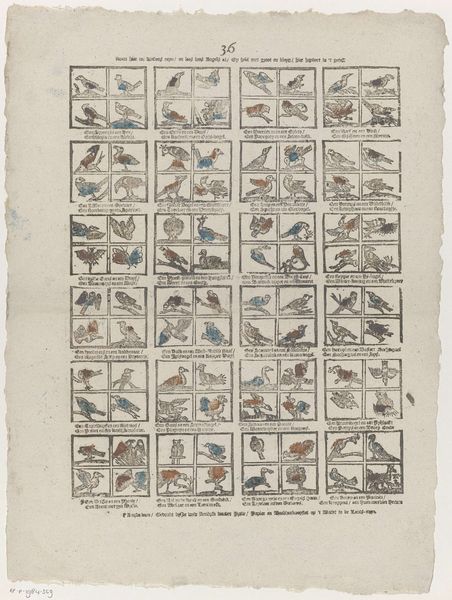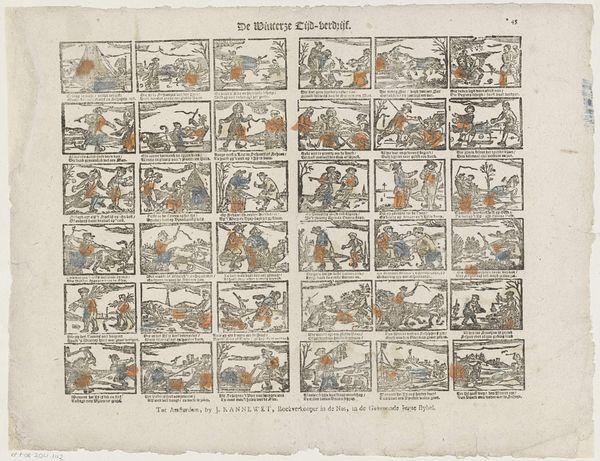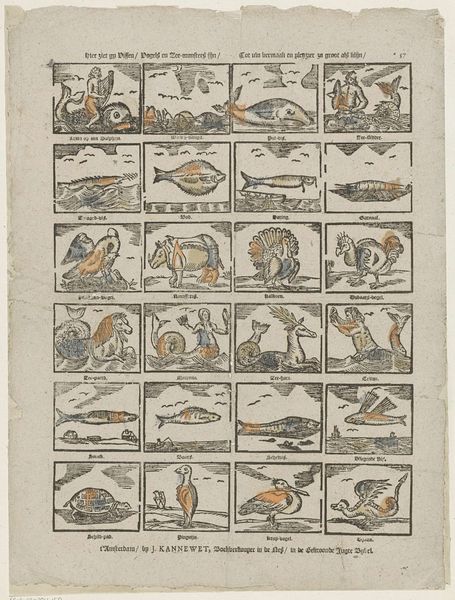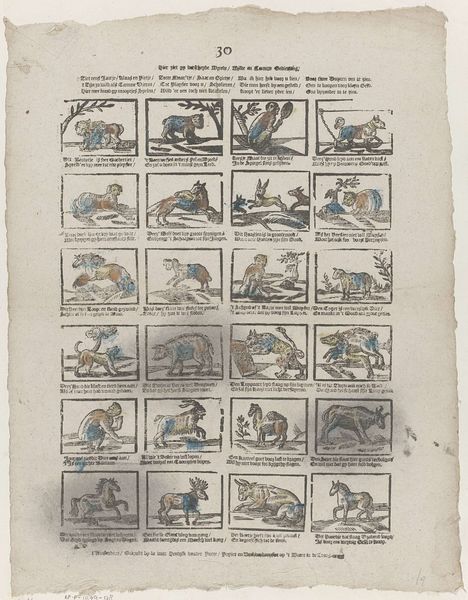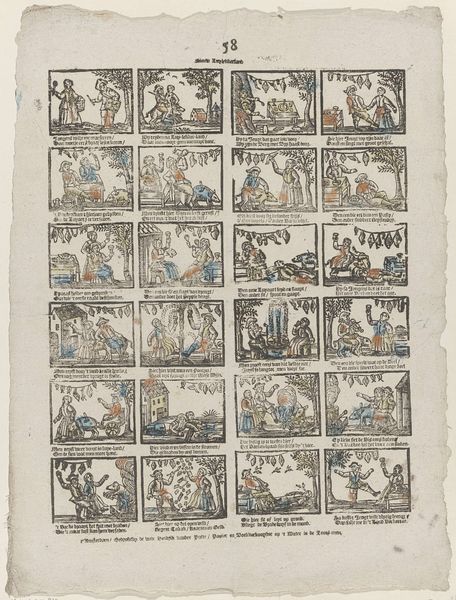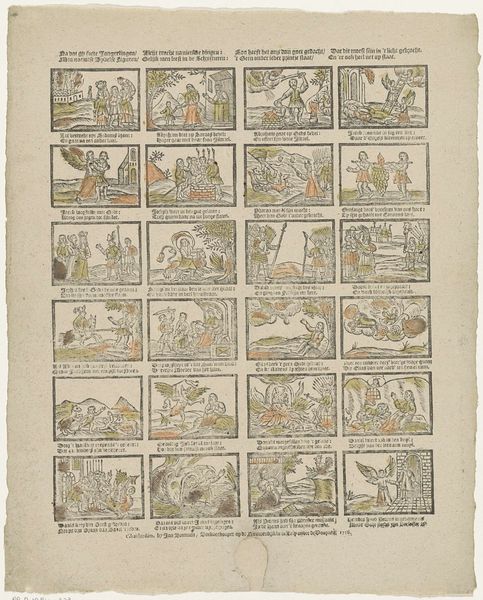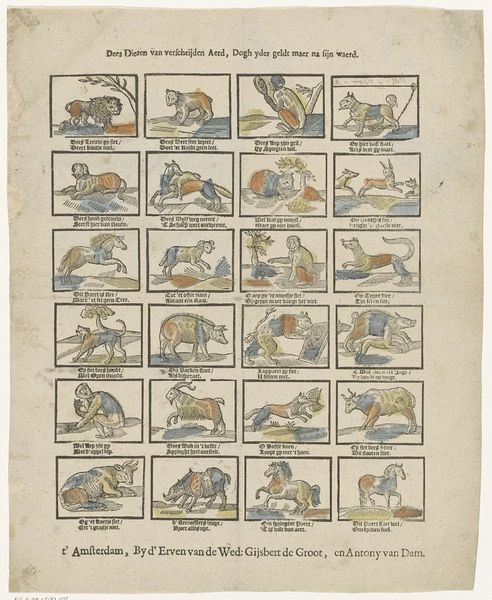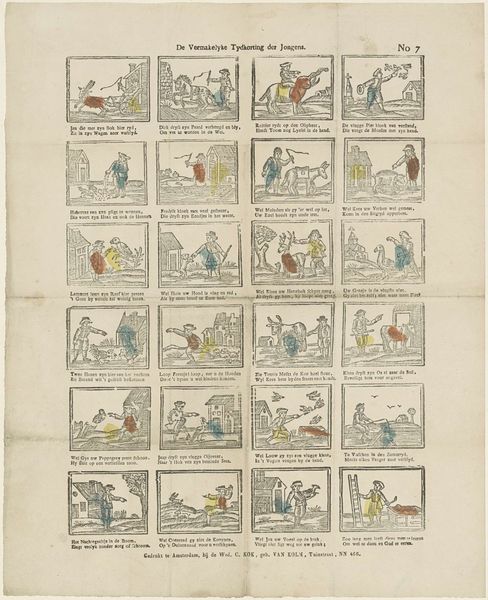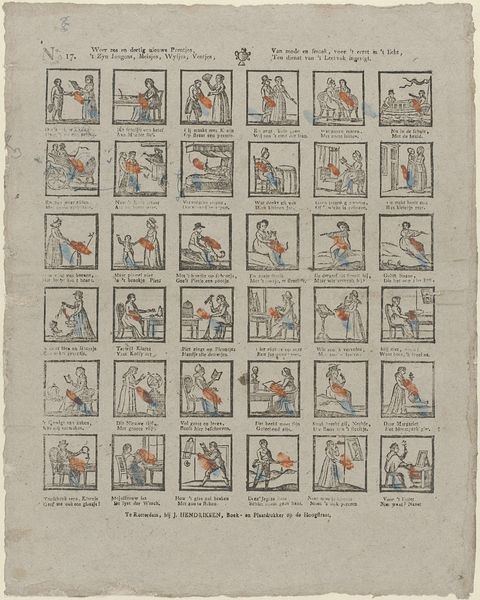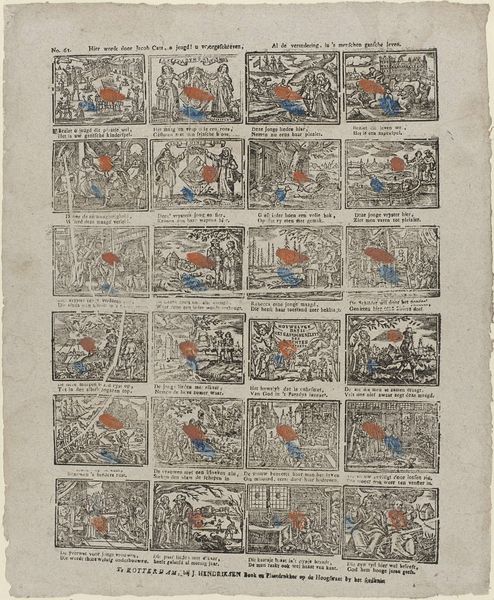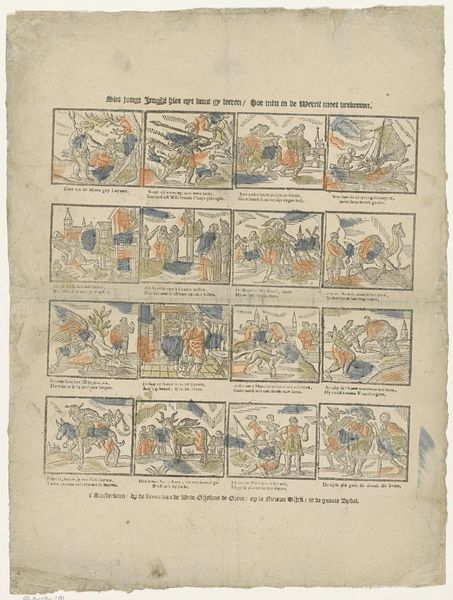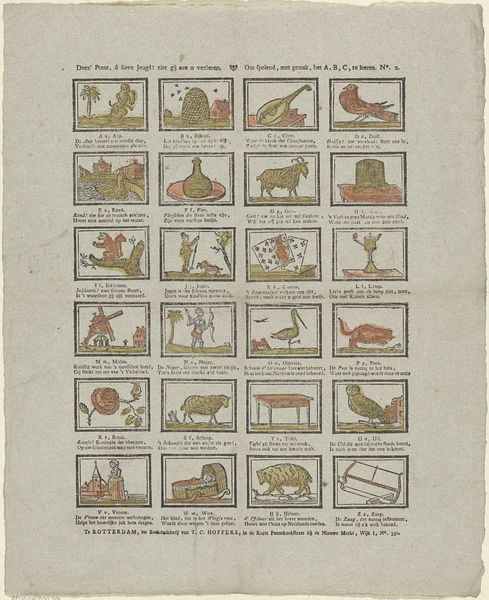
drawing, print, paper, ink, woodcut
#
drawing
#
aged paper
#
toned paper
#
animal
# print
#
sketch book
#
bird
#
paper
#
personal sketchbook
#
ink
#
folk-art
#
woodcut
#
ink colored
#
pen work
#
sketchbook drawing
#
watercolour illustration
#
genre-painting
#
storyboard and sketchbook work
#
sketchbook art
Dimensions: height 412 mm, width 305 mm
Copyright: Rijks Museum: Open Domain
Curator: Here we have "Wilde beesten / wreede dieren (...)" which roughly translates to "Wild Beasts/Cruel Animals". This work, attributed to Erven Hendrik van der Putte, dates between 1767 and 1793. It's a print—specifically a woodcut, I believe, with ink on paper. Look closely, and you’ll also spot some pen work and watercolour. It resides here at the Rijksmuseum. What's your immediate reaction? Editor: Oh, wow. It looks like a page torn from a fantastical bestiary! Each little vignette is so charming and weird. The colors are muted, the paper looks incredibly aged... it feels like a peek into a different world, doesn't it? Curator: Absolutely. This piece reflects the pervasive 18th-century fascination with categorizing and understanding the natural world, but through a lens that blends observation with didactic, even moralistic intentions. The animals are depicted not merely as they are, but as symbolic representations of human traits and behaviors. Editor: I notice the strange composition of these figures and the strange application of colors; it almost makes it feel folk. How does that influence interpretation? Curator: Well, the somewhat naive execution allows us to consider the social context in which this piece was conceived. This wasn't necessarily meant for an elite audience; rather, these illustrations likely circulated among a wider populace, shaping popular perceptions of the animal kingdom. The text accompanying each image – though hard to read here – likely offered moral lessons, reinforcing societal norms through allegorical tales. We might consider, then, how power structures of the time are encoded in the representation of these animals. Editor: The use of woodcut suggests a form intended to make multiples; these pieces may have been more democratic or common, allowing art to be shared more widely across a social and economic spectrum, moving beyond traditional interpretations around the singular "genius". Curator: Exactly! Moreover, folk-art elements offer a lens for understanding its reception within specific cultural and geographical communities. Regional stories, superstitions, and local fauna likely shaped its interpretation, imbuing the work with diverse and personal meaning. Editor: Looking at the whole, I feel it gives one permission to be naive, simple, imperfect—perhaps the animal kingdom gives insight that perfection is not natural at all! It also makes me remember to cherish ephemera. Curator: Indeed, that’s one potential takeaway: how representations shape perceptions and how we can view images within a deeper, critical framework. It’s a reminder that art isn’t just about aesthetics; it’s a powerful tool shaping collective consciousness.
Comments
No comments
Be the first to comment and join the conversation on the ultimate creative platform.
